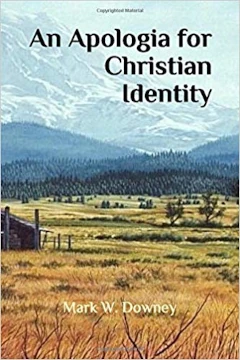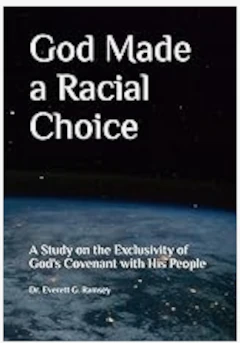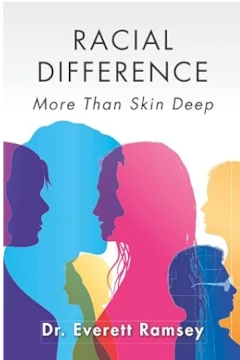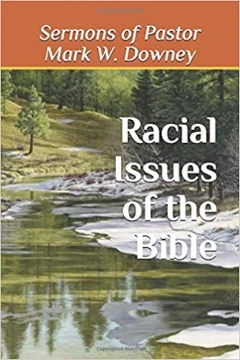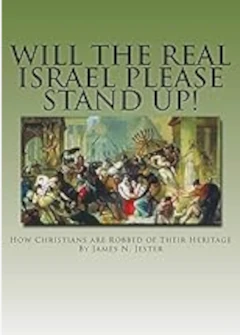The Bruising of Christ
by Pastor Jim Jester
March 31, 2024
SCRIPTURE READING: Isaiah 53:1-6
“Who hath believed our report and to whom is the arm of the LORD revealed? 2 For he shall grow up before him as a tender plant, and as a root out of a dry ground: he hath no form nor comeliness; and when we shall see him, there is no beauty that we should desire him. 3 He is despised and rejected of men; a man of sorrows, and acquainted with grief: and we hid as it were our faces from him; he was despised, and we esteemed him not. 4 Surely he hath borne our griefs, and carried our sorrows: yet we did esteem him stricken, smitten of God, and afflicted. 5 But he was wounded for our transgressions, he was bruised for our iniquities: the chastisement of our peace was upon him; and with his stripes we are healed. 6 All we like sheep have gone astray; we have turned every one to his own way; and the LORD hath laid on him the iniquity of us all.”
INTRODUCTION
The Apostle’s Creed
- I Believe in God Almighty, creator of heaven and earth;
- And in Jesus Christ his only begotten Son, our Lord,
- Who was born of the Holy Ghost and Virgin Mary;
- And crucified under Pilate, at behest of the Sanhedrin.
- He was brutally tortured, buried and guarded;
- And arose from the dead on the third day.
- He ascended to heaven, to the right hand of the Father;
- Whence He shall come to judge the living and the dead.
- And, I believe in the Holy Ghost, his keeping power;
- The Holy Church of Israel, and communion of saints;
- The remission of sins, and the cleansing thereof;
- The resurrection of the body, and life everlasting. Amen.
The Creed outlines the basic doctrines of the Christian faith: Jesus Christ came as incarnate Deity; was tortured, crucified and died for our atonement; resurrected from the grave for our redemption and sanctification; then ascended to the Father; from whence He shall come in judgment, bringing to earth the restitution of all things. The Creed exemplifies basic Christian doctrine.
THE PROPHECY
Our Scripture reading is sometimes called “The Passional” or “The Great Prophecy of the Sufferings of Christ and His Later Exaltation.” Polycarp calls this chapter (Isaiah 53),“the golden passional of the Old Testament evangelist.” Delitzsch says of it, “It is the centre of this wonderful book of consolation (chps. 40-66), and is the most central, the deepest, and the loftiest thing that Old Testament prophecy has ever achieved.”
“Who hath believed our report and to whom is the arm of the LORD revealed?” (v. 1) In other words, who would have thought that the arm of the Lord would come in the form of a suffering servant. No one believed Isaiah’s report that the Messiah would be quiet, modest, and humble. We tend to have a difficult time visualizing greatness in any form other than power and popularity. There will be nothing in the Messiah’s appearance that would mark Him as being God’s answer to evil in the world. He will not draw attention to Himself just as a plant growing slowly in dry ground.
The person spoken of was to be the Servant of God, the arm of the Lord, the subject of prophecy. Yet when he came into the world, he was to be despised and rejected of men; he was not to be received as the Messiah; he was to be put into prison; he was to be brought as a lamb to the slaughter; his visage was to be marred more than any man ’s; he was to be numbered with transgressors, and cut off by a judicial sentence; his grave was to be appointed with the wicked, yet his tomb was to be with a rich man. Further, His sufferings were to be of no ordinary kind. He was to be wounded for our transgressions, and smitten for our iniquities. Even God was pleased to put him to grief, and to make Him an offering for sin, even though “he had done no wrong, neither was any guile found in his mouth.” But after God had made Him an offering for sin, then he was to rise again; to prolong his days; to erect a spiritual kingdom; to sprinkle many nations; to be advanced above kings; to be exalted very high; to see and be satisfied with the travail of his soul; to justify many; and to make intercession for transgressors.
“Surely he hath borne our griefs, and carried our sorrows: yet we did esteem him stricken, smitten of God…” (v. 4) We know Jesus the Christ suffered because of ancient Israel’s (not jews) transgressions and iniquities. God’s wrath was on Him for our sake.
“But he was wounded for our transgressions, he was bruised for our iniquities: the chastisement of our peace was upon him; and with his stripes we are healed. 6 All we like sheep have gone astray; we have turned every one to his own way; and the LORD hath laid on him the iniquity of us all.” (v. 5-6) This is probably the clearest statement of substitutionary atonement in the Bible. The pronouns here and the word “all,” of course, refer to Israel, the covenant people; who always are referred to as “sheep.”
Verse 5 lists four thoughts linked to the words: wounded, bruised, chastisement, and stripes. These can be taken as a whole even though they reveal separate things. This method of emphasizing a statement is known as Hebrew parallelism — speaking of the same thing in four different ways. And of course our Lord was tortured in many ways, including his inward mental pain of being rejected and his heart being wounded. So combining all these thoughts together let us continue, “With His stripes we are healed.”
We are healed, 1. Of our unconcern for divine things. When we realize what He has done for us, we suddenly are concerned about the same things that God is concerned about. Our ignorance respecting His doctrines, showing the importance and reasonableness of a serious study of them, and laying them to heart being received in faith. 2. Of the disease of self-righteousness. For, if our own righteousness could have saved us, and if we could safely have trusted it, Christ needed not to have died. 3. Of our love to sin. This ought to be the first thing that grabs us, for how can we love Him and yet continue as willing servants of sin, the betrayer and murderer (spiritually) of the Son of God? How can we willingly commit a sin knowing that it would break the heart of Him who died? 4. Of our love of the riches and pleasures of this world. For how can we reasonably desire any of these in a world, where our Lord and Master “had not where to lay His head,” where He “was despised and rejected, a man of sorrows and acquainted with grief”? 5. Of our self-indulgence. Since His sufferings and death show that He did not seek Himself, and He died for us, that we “might not live to ourselves” (2Cor. 5:14-15). 6. Of our lukewarmness. For shall we be indifferent, and slothful in the pursuit of what cost Jesus his blood?
Ever since the fall, healing has been the chief necessity of mankind. “With His stripes,” the word here used is in the singular, and not as the translation would lead one to believe. It is read by some as “weal,” “bruise,” or “wound,” meaning the mark or print of blows upon the skin; the word denotes the tumor raised in flesh by scourging. It is elsewhere translated “blueness,” “hurt,” and “spots,” and evidently refers to the black and blue marks of the scourge. The use of a singular noun may have been intended to set forth that our Lord was reduced to a mass of bruising, and was made one great bruise. Our text alludes partly to the sufferings of His body, but much more to the agonies of His soul. He was smitten in His heart each day of His life.
There was a virtual healing that was given us in the day Jesus died upon the cross. But there is an actual application of that great expiation to us when by faith we receive it individually. To as many as have repented and trusted in Jesus, His stripes have given the healing of forgiveness, and it has conquered the deadly power of sin. Where the blood of the atonement falls, sin ’s grasp is loosened, it vacates the throne of the heart, and the spirit of grace, truth, love, and righteousness occupies the royal seat. There is no disease by which you can be afflicted, but that an application of the blue bruises of your Lord will take out the deadly virus from your soul.
ANOTHER PROPHECY
If I were to ask any Christian in America, “Which Bible verse is the key to all others in the Scriptures?” What would they suggest? Would it be the Gospel in a Nutshell, John 3:16, “For God so loved the world…”? Would it be the Summation of the Law, Matthew 22:37, “Thou shalt love the Lord thy God with all thy heart…”? Would it be something else that could exemplify basic Christian doctrine? What if I were to offer them what is known as the Protoevangelium? Genesis 3:15, “I will put enmity between thee and the woman, and between thy seed and her seed…” Do you suppose I would get the “deer in the headlights” look? Mainstream churches are kept blind to this.
You may recognize the meaning of “proto-evangelium” (Greek origin), proto means “first” and evangelion means “good news” (or “gospel”). Thus, Genesis 3:15 is the first mention of the Gospel of Jesus Christ. It is the first glimpse of hope for the dreadful condition that mankind had fallen into. This, in itself, is significant enough to take notice of this statement in Holy Writ; for without it we would find it nearly impossible to fully comprehend the Bible. The Protoevangelium affects every doctrine found in the Bible and is the key to unlocking our understanding of it. Therefore, Isaiah is a prophecy of a prophecy (The Protoevangelium).
THREE DOCTRINES
Genesis 3:15, “And I will put enmity between you and the woman, and between your seed and her Seed; He shall bruise thy head, and you shall bruise His heel.”(NKJV)
You may notice in this version that “Seed” is capitalized to designate our coming Lord Jesus, as well as the corresponding pronouns “He” and “His.” This is entirely appropriate, but should not be construed to mean only one Descendant, for mother Eve’s offspring will include an entire race who are of the Christ (anointed). And, in the first half of the verse, “I will put enmity between you and the woman…” there would be an entire “serpent seed” (or descendants) who would make war against the descendants of the woman.
While there are several doctrines taught in this Protoevangelium, three of these stand or fall together. These three fundamental doctrines are the Incarnation (He came in flesh and blood), the Crucifixion (He died) and the Resurrection (He was restored) of our Lord Jesus Christ. Each one is equal in importance and cannot be separated from the other two. Since both the “bruising” (betrayal, scourging and crucifixion) and the birth of Jesus are prophesied here, they stand or fall together! We can see from this that the Incarnation and the Crucifixion are equally tied together. Without the Incarnation there could be no “bruising” — without the bruising there would be no meaning to the Crucifixion or to the Resurrection. Remove one element and we have nothing.
Therefore, Genesis 3:15 incorporates the Incarnation, Death and Resurrection all in one verse. Why else would God be so careful about preserving Cain and his posterity (Gen. 4:15, 23, 24) if it wasn't to prevent the Serpent ’s seed from being exterminated before the fulfillment of the prophecy? In order for God to keep his promise, the serpent ’s seedline had to be preserved as well as the woman ’s seedline.
Also, Genesis 3:15 is somewhat unique because it speaks both generally and specifically. It speaks generally of a hate war between two genetic groups of people: 1) It speaks specifically of an individual “bruiser” (Judas) from one group, and 2) of an individual Redeemer (Jesus) from the other group. This verse predicts the outcome of this seemingly unending war. While there are many conflicts in this war, there are two significant events; the “bruising of the heel” and the “bruising of the head.” The blow to the heel of our sinless Lord was only temporarily fatal because He arose again (Resurrection implied). The blow to the head of the serpent and his seed will be fatal and final to all belonging to that genetic line (second death).
Is there a Scripture in the New Testament that confirms this prophecy of the Protoevangelium? Yes, there is. On the occasion of Passover with His disciples, the Messiah was betrayed by Judas. He said in John 13:18,
“I am not speaking of you all; I know whom I have chosen; it is that the scripture may be fulfilled, ‘He who ate my bread has lifted his heel against me.’”
So what Scripture was fulfilled except for Genesis 3:15? What other Scripture could it be? There is Psalm 41:9, which reads similar to John 13:18, but John is not a fulfillment of Psalm 41:9, and this Psalm is not a prophecy about anything. The Scripture then, can only be Genesis 3:15, which no doubt is definitely a prophecy.
Now that we understand that it is the seed of the serpent, in the person of Judas (Canaanite jew), that was to “lift his heel” against the Messiah, we can better understand Isaiah 53:5,
“But he was wounded for our transgressions, he was bruised for our iniquities: the chastisement of our peace was upon him; and with his stripes we are healed.”
So it was Judas that raised his heel against the Messiah and bruised Him. It should be pointed out here, what is meant by “lifting up the heel.” It is a figure of speech to describe someone who kicks out at the person who is feeding him. Judas planning to betray Jesus, while eating of the sacrificial supper, did exactly that! This “heel” here in John 13:18 is the same “heel” as in Genesis 3:15. This action was considered one of the most insulting things a man could do. What else would you expect of a devil?
Just before this “lifting up the heel” of Judas, some interesting statements are made. There was a foot-washing lesson from Jesus. John13:10 says, “He that is washed needeth not save to wash his feet, but is clean [pure] every whit: and ye are clean [pure], but not all.” Judas was the exception. Jesus was indicating that all the disciples were clean (pure) racially, but no amount of washing would make Judas clean (pure), since he was born of serpent seed.
Again I should stress, the Incarnation, Crucifixion and the Resurrection cannot be taught separately. We either have ALL THREE or we have NONE. To teach just one or two of these three elemental doctrines alone is nonsense and heresy. As important as the Protoevangelium is, there are many who wish this verse did not exist — even those in Christian Identity circles — because they try to change the meaning of the verse. Let me go over some of the theories and explain why they are wrong.
NON-SEEDLINE THEORIES
Theory #1. The Serpent a Man: There are some in Christian Identity who teach there is no devil, therefore, they have tried to identify the “serpent” as a human being, possibly a pre-Adamite, because they do not believe angels can take on a human form; in spite of the fact of a number of examples in the Old Testament and the New, concluding with the statement of Paul, “For Satan himself is transformed into an angel of light.”(2 Cor. 11:14) By the way, Paul mentions this in the same chapter (verse 2) where he brings up the subject of Eve. While making a spiritual comparison to the church, he clearly implies that Eve was not a “chaste virgin,” revealing that he knew something about what took place in the garden. Evidently, Eve was caught off guard by the serpent who had transformed himself into a very attractive personality; first, by bringing doubts into her mind in order to convince her into something far more than just a casual sin. If the sin in the garden was not a sexual act, then why did Adam and Eve make coverings for themselves? They were legitimately man and wife, so something unusual had taken place.
If the “serpent” was really a human being, then why wasn’t a word used (in the original) that designated a “man” or even a “stranger?” Surely he was a stranger to the Garden of Eden. There are a number of words that could have been used if this were the case: H376 “ish,” H582 “enosh,” H120 “adam,” and two other terms as used in Genesis 6:1-4; all nouns masculine. If the serpent was really a “man” of some sort, shouldn’t one of these words have been used?
So what was the term chosen for the serpent? It was the masculine noun H5175 “nachash.” It is from the verb H5172; “a snake (from its hiss): serpent.” It means:
BDB Definition: To practice divination, divine, observe signs, learn by experience, diligently observe, practice fortunetelling, take asan omen.
Strong’s Definition: A primitive root; properly to hiss, that is, whisper a (magic) spell; generally to prognosticate.
So what kind of “magic” or “divination” did this “serpent” use against Eve? Did he transform himself into “an angel of light?” Surely this word “Nachash” indicates a being that is just a little more than simply a man from another race who impregnated Eve. Some may believe this theory, but there is no proof. The evidence is against them by the fact that Nachash was used rather than a common word for man.
Theory #2. The Serpent a Symbol: Another method used against Seedline doctrine is to spiritualize or symbolize the serpent. There are a number of ways in which this is done. Because of the sentence structure of the verse, if the “seed of the serpent” is spiritual, so also must the “seed of the woman” be spiritual. And, if the “seed of the woman” is literal, so also must the “seed of the serpent” be literal. To differentiate between the two seeds, saying one is spiritual and the other is not, is to add to Scripture what is not there. Of course, this is not right; yet, there are some who spiritualize the serpent, while not spiritualizing the woman.
In Genesis 3:14-15 God is speaking to the serpent (something they ignore)or the devil (or, as in Theory #1, someone of the devil). According to their viewpoint, the “devil” is simply “evil thoughts” or the sin nature. But, if this be true, then God is speaking to Eve’s thoughts, not the serpent. Does this make sense? Was it mental telepathy? Some pastors have even fallen for this, perhaps not realizing what they have done by symbolizing the serpent. And when Eve was considering those thoughts, the Fall had not occurred yet; she was still in the perfect state. The truth is that God does not condemn us for our thoughts — it is when those thoughts are acted upon that bring guilt. God asks, “What hast thou done?” (v. 13) Did Eve’s thoughts make her pregnant? Did Eve’s thoughts cause Jesus’ death? Non-seedliners claim she was impregnated only by her husband Adam, and she bore all her children resulting in no evil seedline. According to this, there are no jews as our enemy and Christ was bruised by sin only (not by jews). Therefore, the whole narrative is spiritualized, turned into a fairy-tale, and we have no Redemption. Furthermore, if Eve’s transgression was not sexual in nature, then God’s punishment was unjust; “I will greatly multiply your sorrow and your conception…” (Gen. 3:16) The Almighty is not unfair, but always executes proper judgment.
Theology is not like a buffet, just going about picking out what one wants. Genesis 3:15 must be taken as a whole for what it says. For anyone to pick part of it to support his/her doctrine does not void the statement. When one spiritualizes the serpent seed, the woman’s seed is also spiritualized by default. In so doing then, the whole verse, including the prophecy of the coming Christ, is null and void along with His bruising! This has to be false, for the “seed of the woman” is literal; so likewise, the “seed of the serpent” is literal. If it is not literal, then there is no “serpent seed” to “bruise” the heel of Christ — in fact, doctrinally speaking, there isn’t even a Christ! Denying the two seedlines is an anti-Christ position.
Another version taught in C. I. circles, is that the flesh and blood mortal body is the “devil” (a symbol). This idea positions us against ourselves, is pure nonsense and is of Gnostic origin. It could be more anti-Christ than the other theories, since it is equivalent to saying that “Christ came in the devil, died in the devil, was resurrected in the devil and ascended to heaven in the devil.” Further, if one wants to insist that the flesh of Christ was somehow different than the flesh of man, then one denies the Scriptures that say, “He took on Him the seed of Abraham” (Heb. 2:16), that He was “of the seed of David according to the flesh” (Rom. 1:3), that He might be “the firstborn among many brethren” (Rom. 2:29), and that He was “made like unto His brethren” (Heb. 2:17).
One can search any Bible commentary or dictionary and the definition for the term “antichrist” is pretty much universally given as one who denies that Jesus came in the flesh. Remember, that Genesis 3:15 stands as a whole, “…Thy seed and her seed;” so, to deny one, is to deny the other. Thus, when non-seedline adherents deny the literal “seed of the serpent,” they also become guilty of claiming that Jesus did not come in the flesh.
Theory #3. The Serpent Not Satanic: Another theory proclaims that the “serpent” is “not satanic” (similar to Theory #1). However, a supposed non-satanic seedline is impossible as applied to the serpent, for then there would be two non-satanic seedlines, which cannot be true since they are at “enmity” —“a kingdom cannot be divided. ”The seed of the woman through Seth is already the only true non-satanic seedline, which opposes the serpent’s seed. Thus, the serpent is satanic by definition, regardless of who he is. “And the great dragon was cast out, that old serpent, called the Devil, and Satan…“ (Rev. 12:9) He is the adversary of the woman ’s seed. The “non-satanic seedline” is a contradiction, because then you are saying the jews are “non-satanic.” This theory also causes conflict with New Testament references to “the evil one” (a reference to Satan). Any attempt to find other seedlines is irrelevant. The theory is a fantasy and a hoax.
“Non-satanic Seedline” = No Seedline! Why? Because the arguments involved result in the same conclusion and beliefs in all of these theories — that of, no jew as our enemy. The only possible exception could be Theory #1, in which case, the man is still satanic by definition, if not by genetics, because he is the adversary of the woman. We can grant them this possibility, but the evidence against it is two-fold: 1) There are no words that identify the serpent as a man. 2) Revelation 12:9 implies the serpent is the devil. To tout an alleged “non-satanic” theory is a ruse of distraction.
Have the non-seedliners compared Scripture with Scripture? No. Have they harmonized the related Scriptures? No. Have they recognized Substantives within the grammar of Scripture? No. None of these theories that spiritualize either of the two main seedlines have adequate Scriptural evidence to qualify as doctrine! They all should be absolutely rejected, for all these theories help hide the jews.
CONCLUSION
There are certain basic fundamental tenets to our Christian faith: The Incarnation, the Crucifixion, and the Resurrection. We believe that He became flesh and dwelt among us; that He was one substance being both man and God when He took on that flesh; that He suffered and died in the flesh at the hands of wicked men; that He arose again in the flesh (Jn. 2:19-22); that He ascended into Heaven in the flesh. From there He will return in the flesh to judge both the living and the dead. Every one of these tenets are indispensable to the Christian faith. Consequently, anyone denying these flesh manifestations of Christ must be antichrist by definition(I Jn. 4:3).
Jesus said to the jews, “You are of your father the devil…” (Jn. 8:44). What is a “father?” Isn’t it someone who begets children? Unless it is a “spiritual” father, such as how Catholics address their priests; yes, it is true, a father has children. In this verse, the father is identified as “the devil,” according to Jesus. So how did the devil have children? Jesus knew what happened in the garden. This is not figurative language here — simply speaking of people who were of an evil character like their father. This is meant racially and genetically, for the context reveals such in John 8:39, “Abraham is our father.” This being the case then, why do some in Christian Identity deny a racial aspect here, and at the same time claim to be a religion of racial consciousness? Why the exception?
If Jesus was not bruised for our iniquities we have nothing to look forward to except the grave. It is blasphemous to even infer He was not made flesh and not bruised; yet the non-seedline position boils down to exactly this. To dismiss the Two Seedline prophecy is to reject Isaiah 53:5, “But he was wounded for our transgressions, he was bruised for our iniquities…”To deny one prophecy, is to deny the other. Isaiah is a prophecy of a prophecy — the Protoevangelium. If there is no “serpent seed” to bruise Jesus, we have no Redemption!
Christian Identity faces a doctrinal dilemma. Are we to totally reject the major doctrines of the Christian faith? Is C. I. weighed in the balances and found wanting? How can we even call ourselves C. I. without the literal fulfillment of Genesis 3:15? Are we any different from British Israelism?
As a movement, are we to deny the prophecy of the Protoevangelium, the “first good news”? Without it there is no Gospel. With it we have victory: “And the God of peace shall bruise Satan under your feet shortly. The grace of our Lord Jesus Christ be with you. Amen.”(Rom. 16:20)



